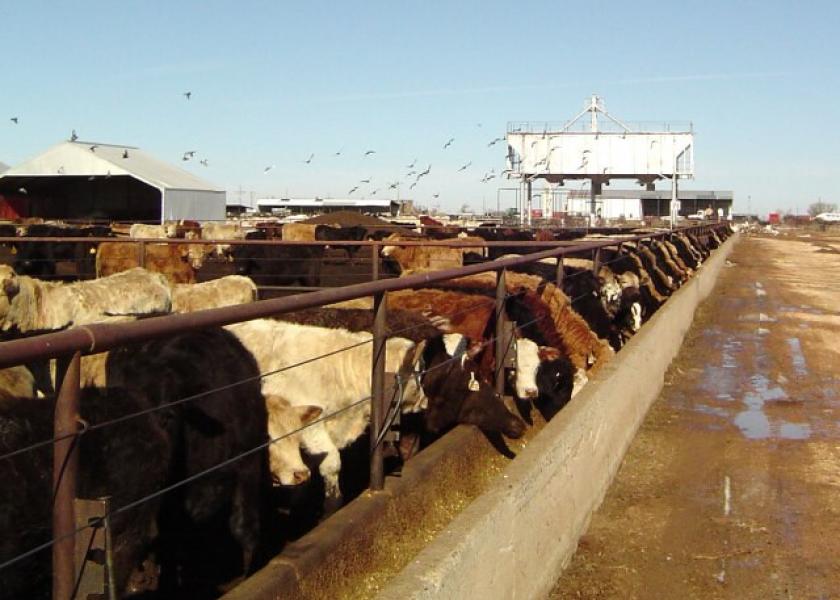Halting Beef Imports Could Hurt Demand, Spark Unintended Consequences

During a press conference intended to highlight details of the Coronavirus Food Aid Program (CFAP), the focus quickly fell on cattle. President Trump made a broad statement about cattle imports, asking USDA Secretary Sonny Perdue to look into terminating bringing in cattle from other countries.
“I read yesterday where we take some cattle in from other countries because we have trade deals, I think you should look at terminating those deals,” Trump said, speaking to Perdue. “We have trade deals where we actually take in cattle, and we have a lot of cattle in this country, and I think you should look at the possibility of terminating those trade deals.”
The statement set off a slew of responses, some praising the President’s comment, while others criticized the possible decision. The criticism came rooted in concern over possible long-term consequences about demand.
“I'm not sure it's the best decision that we can make for the industry,” says Scott Brown, an economist with the University of Missouri. “I think we need those imports, when you talk about cattle or beef, we also like to talk about products we export back to Mexico and sometimes those are beef products. We wouldn't want to shut off cattle trade headed from Mexico to then turn around and have beef shut off from us going to Mexico.”
Brown says the U.S. is a net importer of beef on a quantity basis, but a net exporter of beef on a value basis. That’s because he says the U.S. exports higher quality beef products. The product typically imported is lean beef, which is used to blend and make lean ground beef.
“We have to talk about what kind of beef it is that we're talking about importing versus what we're exporting, which when you think about how the rest of 2020 unfolds, we need strong beef exports out of the United States to keep cattle prices higher than otherwise would be the case,” Brown says. “I wouldn’t want to get in a situation where we're not allowing any imports of beef, allowing other countries that we export to maybe put similar restrictions on our products. So there there's something about fair trade that's important here in how we participate in a global market that's important. We have a great chance to grow beef exports this year.”
Glynn Tonsor says it’s key to remember beef imports are needed in order to process things such as ground beef in the U.S. He says that was the case even before COVID-19.
“A lot of the stuff that we import in the beef complex, historically in normal pre-COVID times, is an input into another step, largely it's an input into our ground beef production system,” explains Tonsor. “I won't bore some specifics, but that's what it is. So, the direct import for direct consumption is fairly minimal. The direct import as an input into added value to domestically produced is the norm. That's really important to keep in mind as to why we import under normal times.”
Brett Crosby is a rancher, but also an economist with Custom Ag Solutions. He says with the current supply strain of beef at retail chains, imports were needed to help ease the supply and price pain. He points out the supply shortage at the retail level is due to the bottleneck of the beef supply chain at processing plants, which he says should be a relatively short-term problem.
“The last thing we want to do is as beef producers is to create a larger shortage or to make beef unaffordable for those who want it,” says Crosby. “The law of supply and demand says that if we decrease supply, we are going to have to increase price or else we're going to have a shortage. So ultimately, I expect that reducing imports will reduce supply, causing increased prices, and it will be detrimental to the industry in the short-term.”
He says longer-term, there are still questions on how the economy recovers, and what impact it has on disposable income for U.S. shoppers. If disposable income is strong, beef demand typically reflects that. For now, he says beef needs to be affordable at grocery stores, and that means imports are needed.
“We want people to like beef,” says Crosby. “We want people to choose beef. We want people to have beef as their protein of choice. And the way we do that is we keep it in front of them and we keep it affordable. And if we can't do that at domestic because we have disruptions in the supply chain, then the best thing for us to do in the short term is to import it and make it available for them.”
Brown says the processing situation is slowly improving, and the quicker it improves, the need for additional imports will also ease.
“We've changed a lot in the past two weeks,” Brown says. “Slaughtering in the low 90,000 head a day in U.S. cattle processing has changed the economics of pulling beef from other countries in the United States, specifically other products besides lean ground beef. So, I think where we set a week to 10 days ago is very different than where we sit today.”
As the processing picture improves, Crosby hopes the market starts to climb out of the bearish news and numbers. He says if the economy can improve, and beef demand stays strong, the price picture looks better longer-term.
“In normal situation, we would climb out of it because we will be working through supply,” he says. “In the feedlots, even though we're backed up, the cattle on feed are lower than they were a year ago. Placements are down. So, we would expect that there will be there will be a smaller supply of beef coming out later, which will which should be bullish for prices.”







